Tinder: How They Keep You Swiping
From addiction, to its effect on mental health; Tinder is well and truly a mind game.

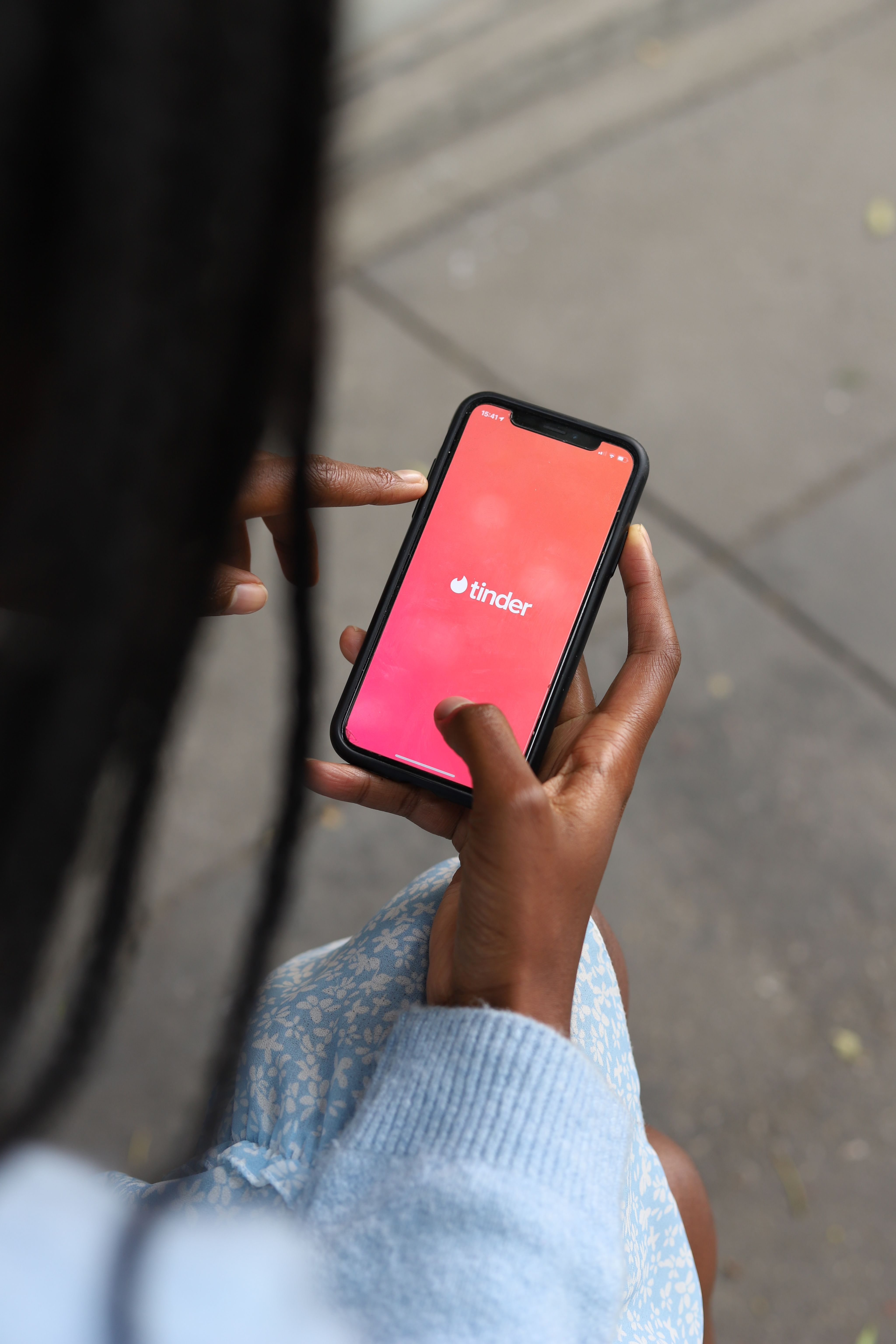
Photo by Good Faces Agency on Unsplash
Photo by Good Faces Agency on Unsplash
I lost a bet. Specifically, a bet I made with my university housemate to see who could score a free kick first in a nostalgia-filled week of playing FIFA 15 on the PS4. The winner had to download the popular dating app, Tinder, and I was the one that conceded that unfortunate goal.
It’s not like me to even accept one of these bets in the first place; but in an uncharacteristic lapse of judgement on my side (and my consistently poor FIFA skills), Tinder ended up being installed on my phone. I was not exactly thrilled.
I created my account, set up my profile, added a couple of pictures and was setup within minutes. Before I knew it, people from my local area were appearing on my screen and I had to ‘like’ or ‘dislike’ them based on a few photos, a bio and some tags.
I was officially a Tinder guy.
The dating app concept was something I had never considered trying; but when I started, I found the experience strangely addictive. Swiping left and right on random people, finding out someone has ‘liked’ you, and the mysterious ‘you have received a match!’ Notification that will make you drop whatever you are doing to improve your self-esteem a little bit more. It made me keep wanting to come back.
My usage of Tinder eventually started to settle down when I realised I didn’t want to rely on it; but I still occasionally find myself aimlessly swiping in my free time when I don’t have anything going on. I know this isn’t just me, though, as I often see my friends doing the exact same thing. I did, however, start to wonder why this would happen when I don’t necessarily find the app enjoyable.
I decided to investigate what makes Tinder so addictive, and along the way, I talk to Tinder users, dating experts and really work out if the flame-emoji app knows our own brains better than we do.
How exactly does Tinder work?
For anyone that is unfamiliar with the application, Tinder is one of the most-popular dating apps available on mobile devices. The dating company claims that having started out as a college campus app in 2012, the program soared in popularity and has now been downloaded over 340-million times.
The concept is simple - you create a profile that shows other people what you look like and what your interests are. Your profile becomes public to others, and you see the profiles of other individuals, with the possibility of matching and getting to know them.
When creating your profile, you input your first name, your age, your sexuality, your gender, your general location and up to nine photos of yourself. There are also optional extras you can add to tell people more about you, such as your zodiac sign, communication style, drink of choice, ‘passions’ (interest tags that will be used within the algorithm to link you to people with similar tags) and more.
Options are also there to add your job title, company, education, link your Instagram page and show your favourite Spotify songs and artists. Users are able to choose the age range they want to see people within (between 18 to ‘100+’) as well as maximum distance.
Once your profile is all set up, you can visit the main page where people within your sexuality, age and distance preferences will be displayed on the screen. You are able to cycle through their photos, read their bio, and see all the information mentioned above that you are able to add to your own profile.
If you like the person you are looking at, you can swipe right to ‘like’ them; and swipe left if you don’t. You are also able to ‘Super Like’ people, which notifies them that you think they are better than a normal like - however, these are locked behind the Tinder paywall, and non-paying users are only given a handful of free Super Likes when they first sign up.
If a person that you swipe right on does not like you back, you will simply appear as a blurry, hidden icon in their ‘likes’ tab. This works vice versa too, with people that have liked you being hidden in your ‘likes’ tab until you ‘like’ them back.
If two people swipe right on each other, they will ‘match’, which will move them to the conversations page. With this page, you are able to message them just as you would on any other messaging app - though you are unable to send pictures.
Seeing who has liked you is locked behind the premium paywall for the most part; though occasionally the app will let you ‘pick a card’ and see one of the people that have liked you, and you can decide if you want to swipe right or not.
These are the core mechanics of Tinder; though there are some other features available, such as ‘Today’s Top Picks’ - which lets you pick one person out of ten featured people every day, and different timed events that will see you answer questions and match with people that answered similarly.
But what about this concept makes Tinder addictive? Why do people come back for more? It turns out, the answer to that questions is buried beneath layers of complexity, and involves a lot of psychology.
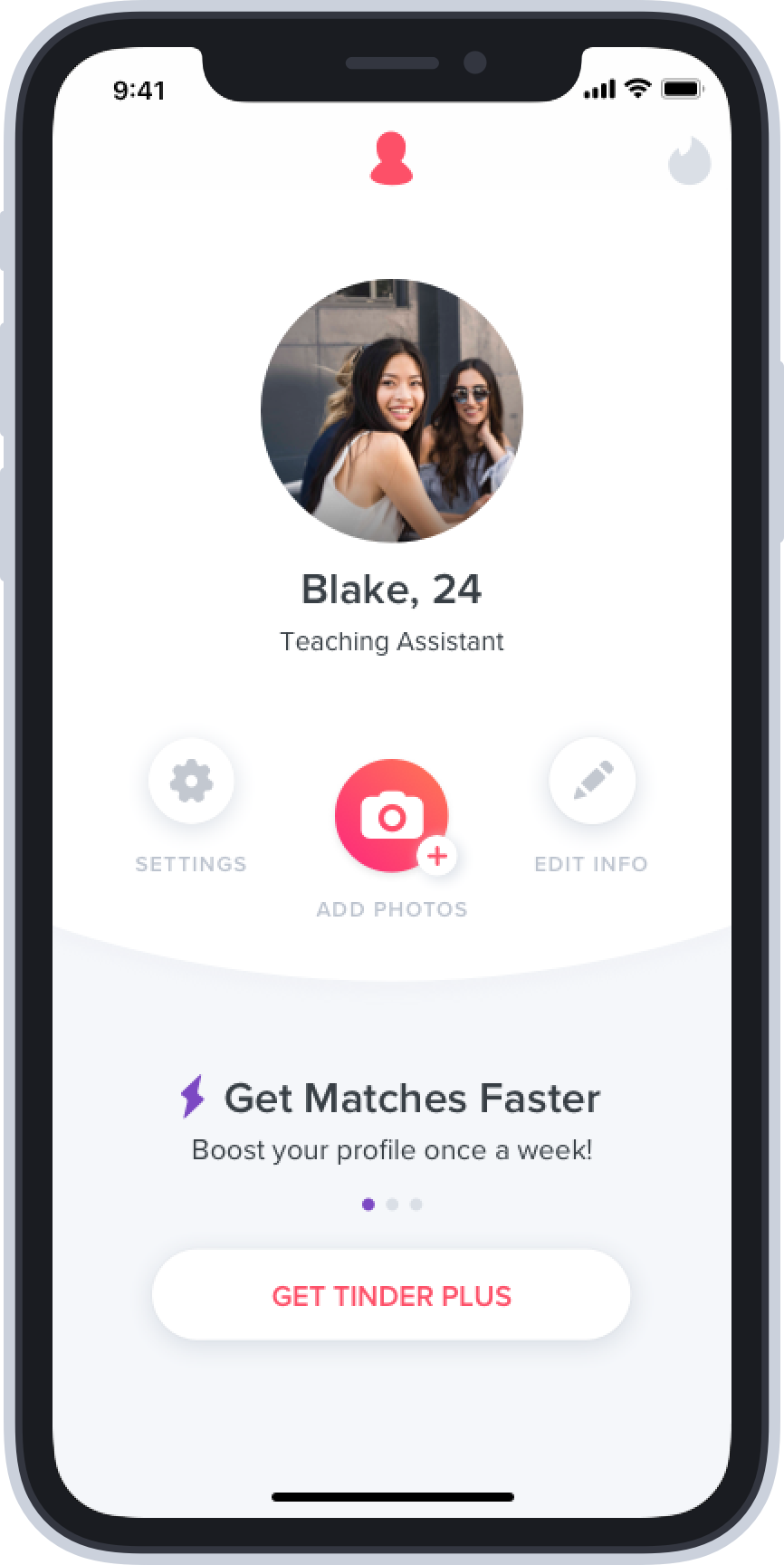
Image: Tinder Newsroom.
Image: Tinder Newsroom.
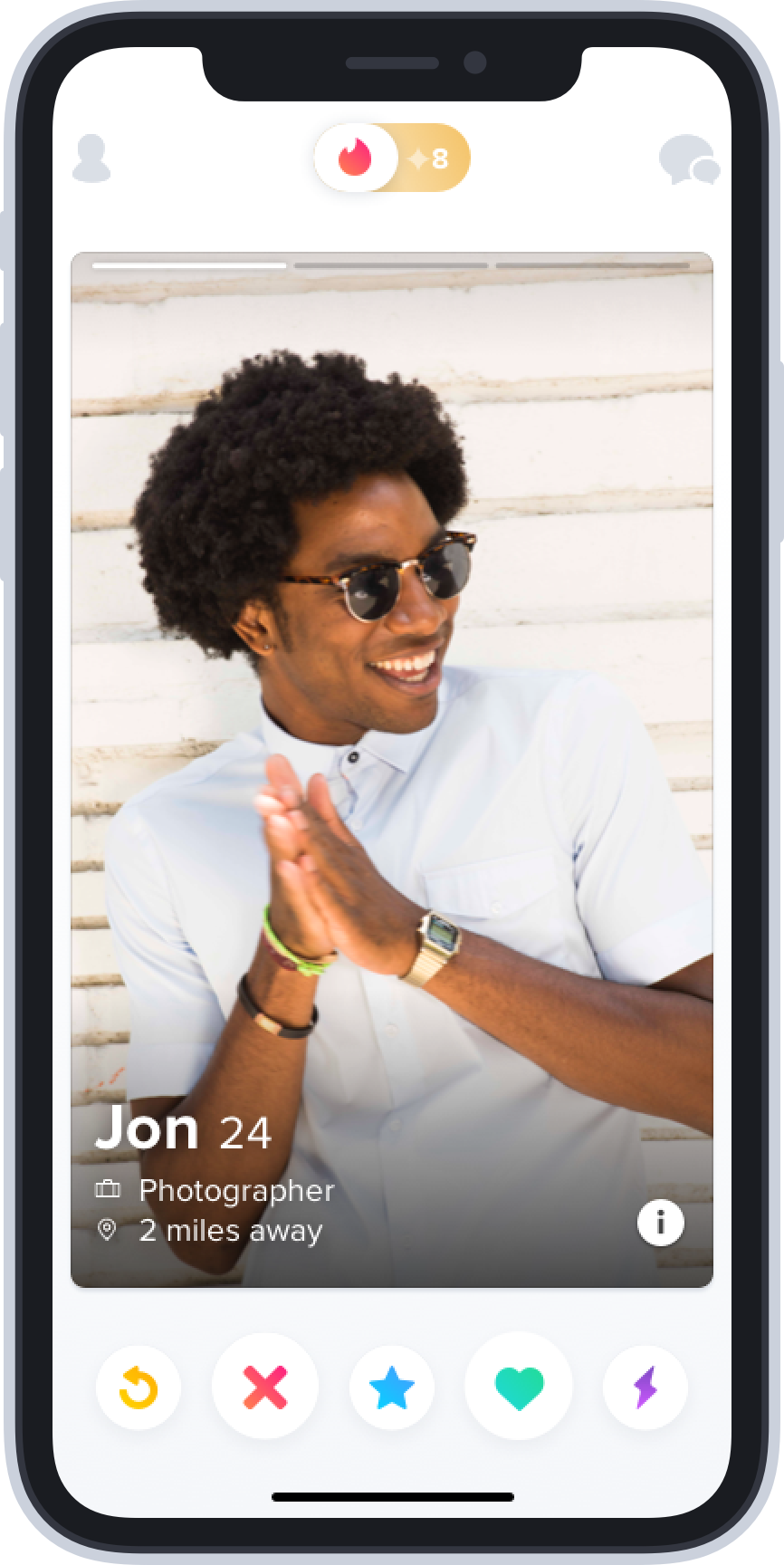
Image: Tinder Newsroom.
Image: Tinder Newsroom.
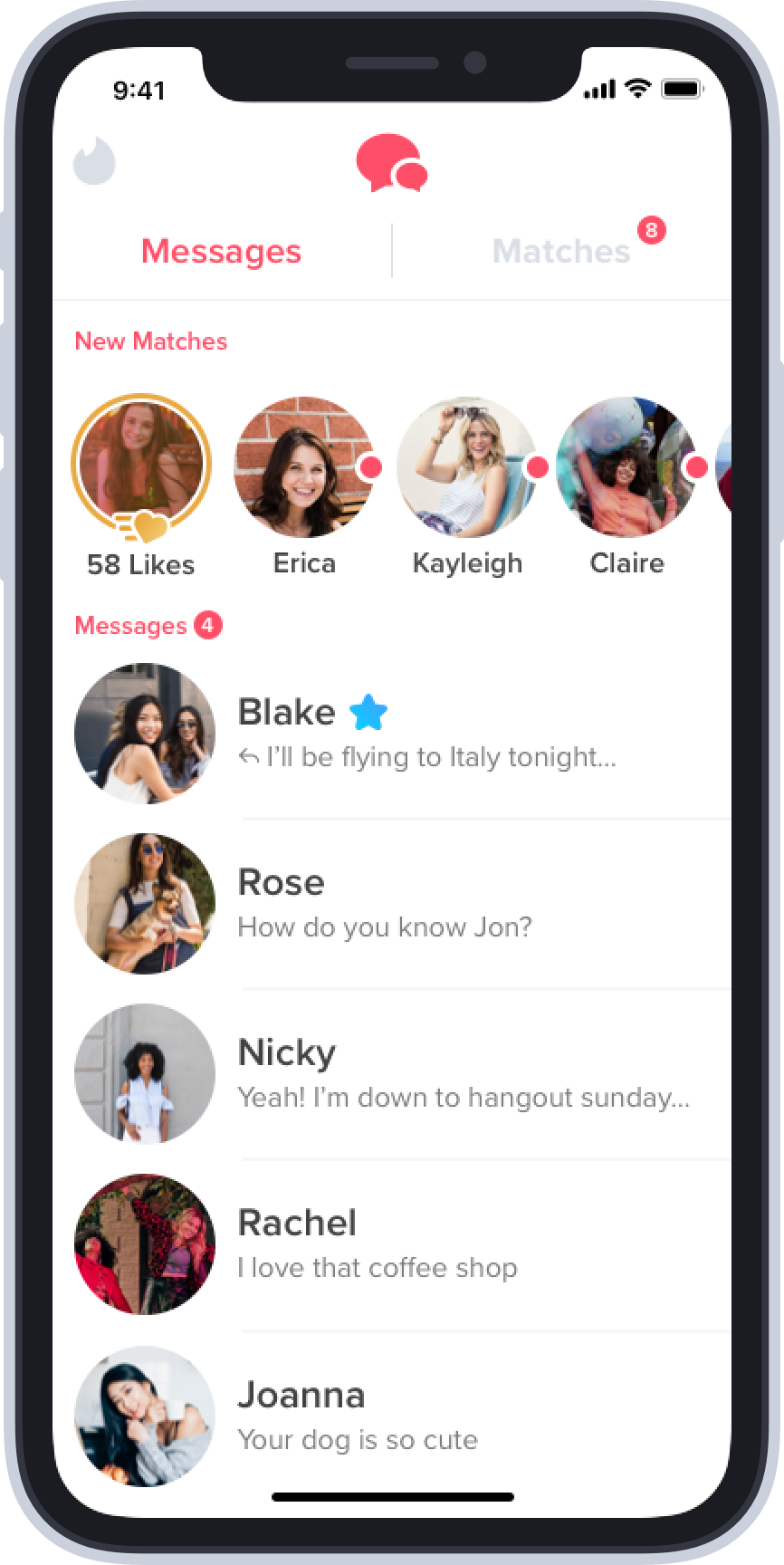
Image: Tinder Newsroom.
Image: Tinder Newsroom.
Tinder fuels your ego
People sign up for Tinder for a handful of different reasons. Some people want to find a long-term relationship, while some people may want something more casual. Lot’s of people sign up for Tinder as a way to make friends (especially if they are in a new area), or as a way of boosting their confidence.
When I reluctantly signed up for Tinder, my main goal was for the confidence boost - and I have to admit, it worked. Seeing a notification that somebody has liked you, or that you have received a match is refreshing - it almost feels like a compliment.
Constantly swiping through Tinder will increase your chance of a match, in turn boosting your confidence and making you spend more time on the app in order to feel that boost again. Receiving a like is essentially the online equivalent of being in public and hearing a stranger compliment you to their friend while you are walking past.
I decided to ask some people how their experience on Tinder has been, and a 20-year old, male student described their overall experience as “mixed”:
“[Tinder] can impact your ego in both a positive and negative way, depending simply on the quantity of likes or matches you can attain. Whilst Tinder is deemed a good place to meet new people, it’s something that can really diminish your mood, or make your ego rise.”
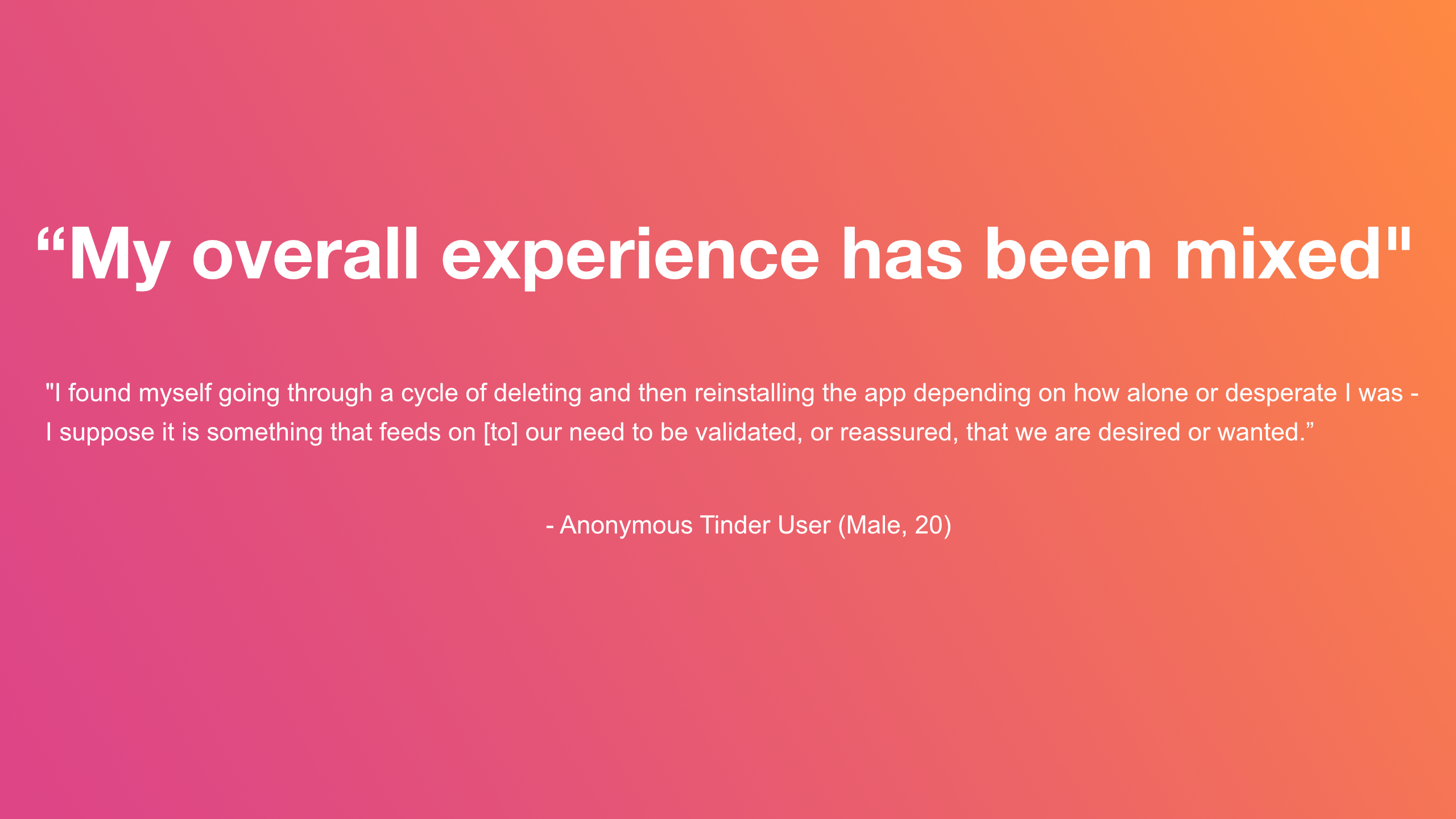
I found this analysis fascinating, as the need for validation is becoming an increasingly important factor for people with the rise of social media. In a world where celebrities look perfect in their Instagram photos, and the number of likes and followers you have helps determine your popularity within a group of people - validation in the form of numbers next to a photo has become a big part of people’s lives and online presence.
As someone who has used Tinder, I agree with the male student’s opinion that the dating service provides validation - a feeling of being desired and wanted. A real person has chosen to swipe right on you, and that makes you feel good. You want to feel that way again, and again, and again. This is where the habit starts.
However, there are more reasons why you may find your screen time a bit higher on Tinder, including clever marketing and even smarter app design.
Let’s talk about UI
‘UI’ - otherwise known as a ‘user interface’ is the fundamental design element of any piece of software you have installed on your mobile device. A confusing UI will likely see users get frustrated, while a simple and addictive interface will make users not stop using your application.
Colour is a classic example of something in UI (and in other design elements, such as logos and websites) that is crucial in order to tap into the mind of your audience. Every colour has a psychological connotation, and Tinder exploits your mind’s interpretation of colour to make it quick and easy to understand how to use their program.
It wasn’t until I started to pay attention to these design choices while producing this article that I realised just how intentional every decision is.
For instance, the colour red has the connotation of love and passion. Love hearts tend to be drawn in the colour red, and roses (a red flower) are often used as a romantic gesture on Valentines day or other special occasions.
However, we can also interpret red as dangerous, commanding or intimidating. If you think about ‘stop’ roadsigns, traffic lights, or the envelope of a threatening letter - the colour involved is usually red. The same applies for the colour of the ‘dislike’ button on Tinder, which is a thin, circular outline with a thick, intimidating red cross in the middle that will reject the person on your screen.

On the other hand, Tinder’s ‘like’ button is a green-filled love heart in a green, circular outline. While it may seem like a push, the nature-themed ‘growth’ and ‘new beginnings’ connotation of green is in the back of our mind, making the interface very clear for new users - even if they aren’t necessarily thinking about the colour of certain icons.
Other features are often accented with the colour gold - symbolic of quality, expense and luxury - and is obviously referring to the features that Tinder’s ‘Gold’ and other paywall options will limit users to seeing.
However, the wide range of colours and simplistic shapes that Tinder utilises is part of the reason we find it as addictive as we do. The app is simple to navigate, which means it doesn’t require much attention.
What is the result of this? The result is an app that you can aimlessly launch while watching television, waiting in a queue or as a background activity while doing something else - it’s that simple.
While UI is important in the way Tinder operates, I, and many others have found through personal experience that the most addictive part of the program is actually its famous swiping mechanics.

Three swipes, and you’re out
While there are buttons that are used to like or dislike people on the Tinder app, as I just mentioned, the standard method of interaction is the ‘swiping’ method - which has some addictive characteristics in itself.
Much like other social media websites, such as Instagram and Facebook, the swiping on Tinder can be endless (depending on whether you pay for the intentionally tempting subscription or not). The repetitive motion of swiping keeps people on their phones for hours, and Tinder capitalises on this.
Dragging your thumb from right to left, or left to right is incredibly easy; and in combination with the streamlined design that gives you almost everything you need to know about a potential match at a glance - each interaction does not take much effort. And since these interactions are so short, it is easy to repeat this process over and over again, for a long time, in an attempt to find short or long term happiness.
An anonymous, male Tinder user agreed with me, saying that swiping left and right on profiles is “easy,” and that it isn’t difficult to spend a lot of time using the app for no reason at all:
“When I had Tinder, I would say that I did find it addictive, as it was an easy application to open on my phone, and if I had any spare time and I was feeling down, or depressed, I would be able to open it up, log in, and start swiping. It could become too addictive, and I could spend up to half an hour on it,” he explained.
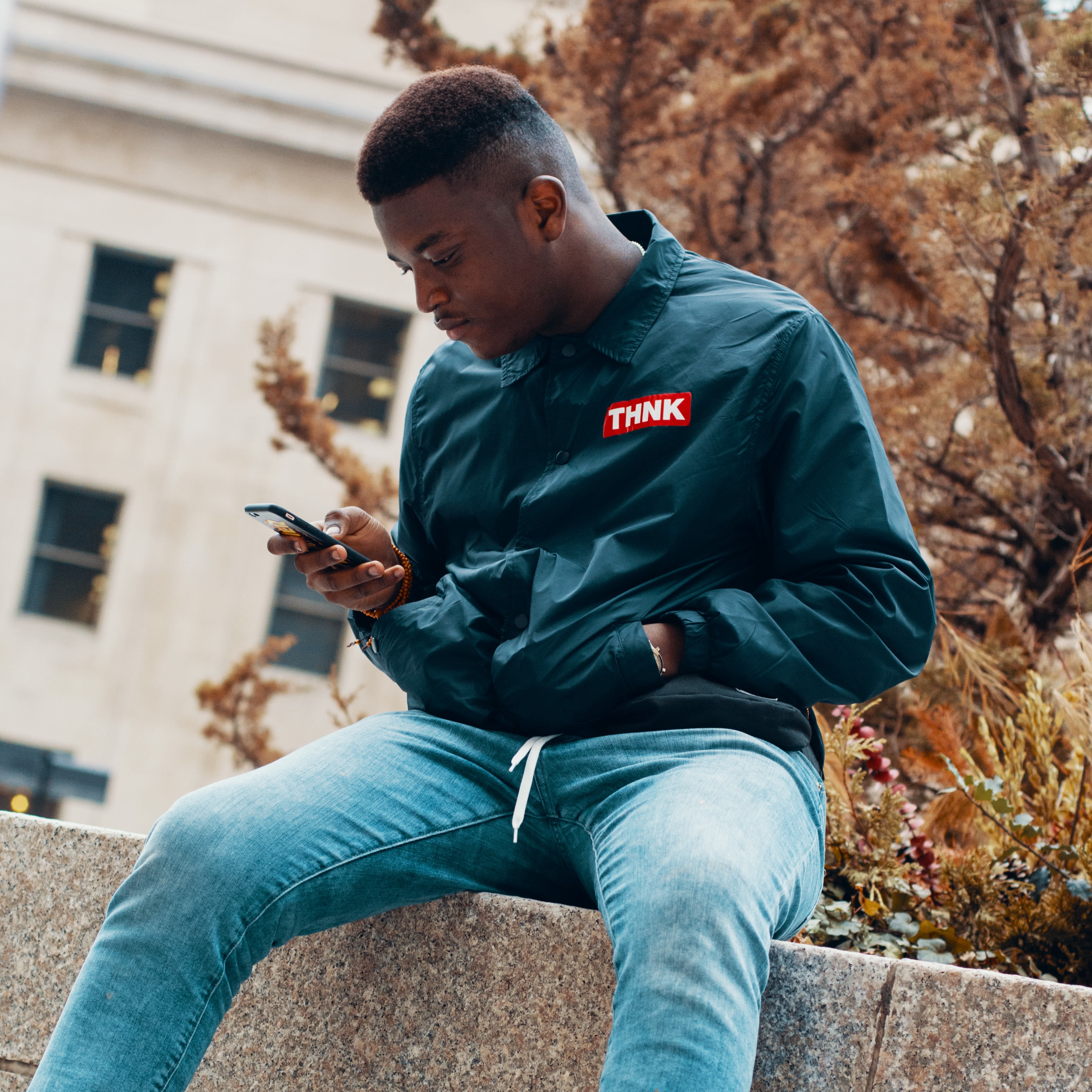
Photo by Timi David on Unsplash
Photo by Timi David on Unsplash
I asked this user what made him think Tinder was addictive, whether it was the user interface, the marketing of the subscription (which intentionally misses information you want to know) or anything else.
“Personally, I found the most addictive thing about Tinder is how easy it is to swipe either right or left on people’s profiles, and how simple it was to view their profile to see if there were any common interests shared.”
“I [would] find myself launching Tinder often, because I had free time and thought I would possibly find a match. I think I took the site too seriously, trying to find ‘the one’, and it sometimes became a bad habit in a matter of speaking,” the 23-year old concluded.
According to a statistic shared by Statista and researched by App Ape, 34.5% of active Tinder users in the United States (that use Android devices) would use the app daily, while 68.9% of active users will log in to Tinder monthly.
This data goes to show just how well Tinder is able to use UI and its psychological tricks to its advantage; as the combination of app design and making users feel good is all people need to keep coming back every day.
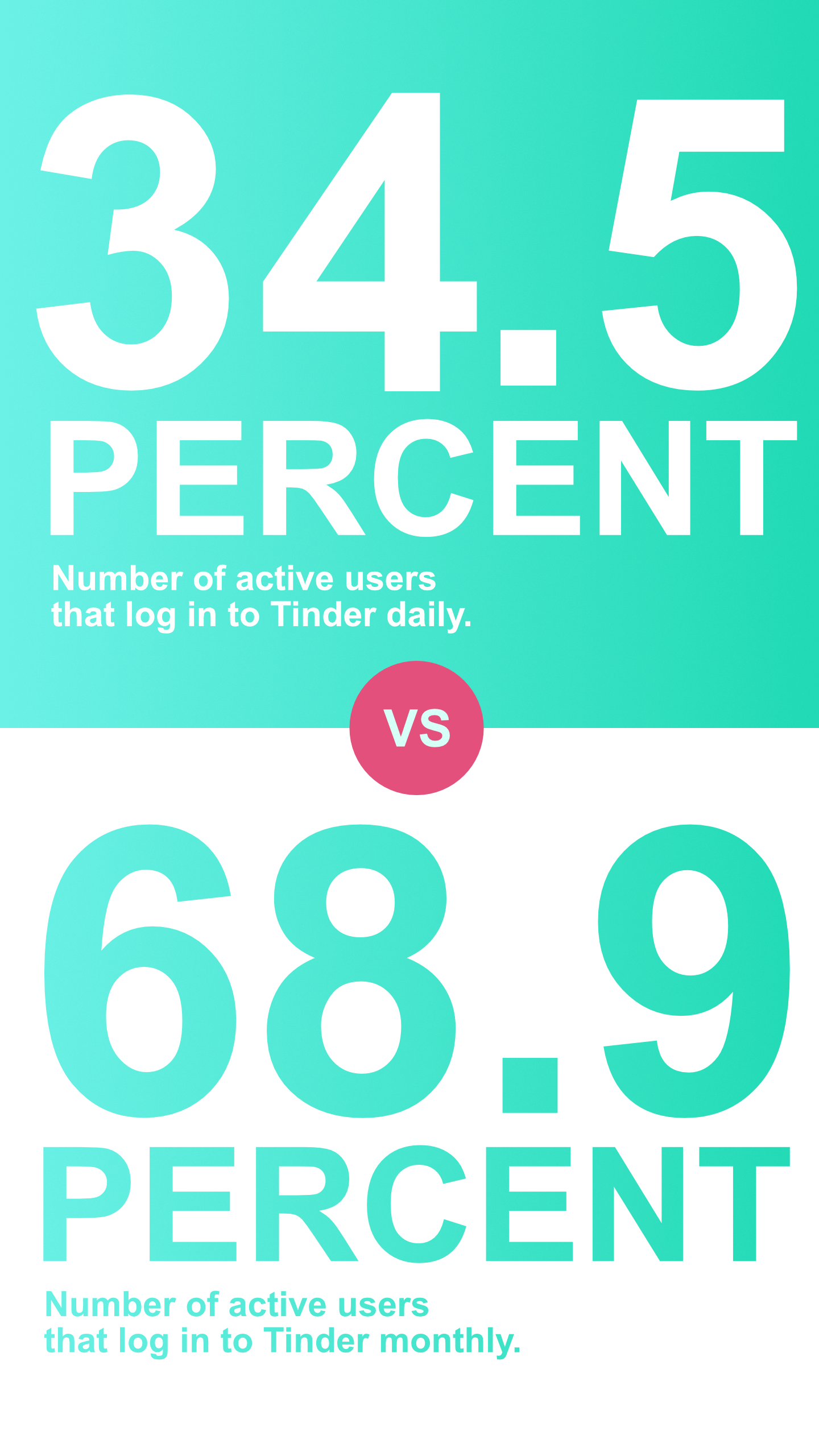
Do people actually like using Tinder?
Returning to my own personal experience - I am very much in the same boat as the 20-year old male that earlier claimed that their Tinder experience has been “mixed”. As someone with the same age and gender, I can relate to the great feeling of confidence when you see that you have matched with someone, or have received a like. However, receiving lower numbers of these things hurts your ego as much as the likes will improve it.
Ultimately, Tinder is an app that I can’t say that I enjoy using.
I don’t feel comfortable with the concept of judging someone immediately based off their looks - though that is what most people end up doing a lot of the time, as lots of profiles don’t include bios or any information that will let you get to know them more. I have always lived by the metaphor ‘don’t judge a book by its cover,’ and Tinder makes me skip this thought process in the search for an ego boost, potential long term happiness and because the application is addictive.
This is all from the perspective of someone that rarely talks to their matches, and has not been on a date as a result of using Tinder. However, lots of people are on Tinder for different reasons, and many find exactly what they are looking for on the platform.
When asking the same 23-year old male whether they think Tinder is a healthy or toxic platform to try and meet new people; the user believed that the program has potential to be healthy, but in his experience, was toxic:
“If used correctly Tinder can be a healthy dating site, however there are a lot of fake profiles on there, and more needs to be done to eradicate [them], because [people] can get drawn in far too easily, in my opinion, and something bad may occur.”
“I deleted [Tinder] as I was spending far too much time on the site, and I personally thought that it was toxic, however it depends on the individual [that] is using [it].”
I also asked whether Tinder affected this individual’s happiness, to which he responded that not only his mental state was affected by the use of the dating app, but insecurities also started to play a role.
“I think [Tinder] can affect people’s happiness and wellbeing massively, because often, I have seen female profiles and thought they were really pretty; [but], I would feel insecure about my personal looks as I would compare myself to them.”
“I think this is a major flaw, as people can easily become depressed by comparing their looks to others.”
“I also think it affected my mental wellbeing as I may have struck up a conversation with [someone], and thought things may have been going well, however I may have said something that may have been perceived the wrong way, and found myself to have been [unmatched] by the individual in question.”
“Whereas if it is [a] face to face meeting, there can be a more relaxed approach, and things may not be as intense or as insensitive compared to online dating.”
This was a good point from the former Tinder user, as photo-sharing platforms such as Instagram have already become famous for making people feel self-conscious about their looks due to the photo-editing celebrities use, the stereotype that a ‘better-looking’ person will receive more likes, and more. When Tinder brings in the idea of judging a random person based on their looks, then making the decision of whether you like them or not, it does not take long for someone to feel insecure about their own looks and personality as a result of this criticism. This is the direction that online social platforms has taken.
Furthermore, the point of text messages being interpreted the wrong way is also very much a common fear. While body language, facial expression, stuttering words and more can give a real life conversation much more meaning and clarity; the difference in grammar (especially when ‘text talk’ is a thing) can cause communication barriers and for a message with harmless intentions to be taken the wrong way.
I spoke to some experts
In order to get a better understanding of how Tinder works within the wider dating scene, I decided to speak to some professional dating coaches to see if they could provide me some insight as to what strategies the dating company uses to keep bringing their users back - and the responses certainly didn’t disappoint.
Chris Pleines, dating expert from datingscout.com, a website dedicated to advising people about relationships, dating and more, confirmed that validation is indeed the primary factor that keeps bringing people back.
“People are addicted to dating apps like Tinder because this allows them to connect with different people without the need to interact with them physically. This gives them the freedom to say what they want. The attention one gets can also be addictive, especially if this is not being experienced in real life. It makes them feel special and that they somehow matter to someone. Dating apps give people validation. Getting a match results in a surge of endorphins or adrenaline because it makes one feel confident and complimented. With that, people keep going back to dating apps to get the attention they are seeking.”
“Tinder's fun and exciting interface carefully encourage[s] addictive rapid swiping. The app uses a variable-ratio method, where matches are shown random schedules to further extend users' interest and desire for rewards. Tinder is like a slot machine that gives you casual dates and hookups in a more general sense.”
Much like what one of the anonymous Tinder users suggested, the concept of an online-only dating app gives people the confidence that they may not have in real life, much like photo and video sharing social media platforms do. I asked Pleines if he thought Tinder was a toxic or healthy platform for dating, as other social media pages are often branded as ‘toxic’; and he believes the people on Tinder can be more toxic than the platform itself.
“As with other things, there are advantages and disadvantages to internet dating. Online dating can be viewed positively or negatively, depending on which perspective and circumstance you are coming from. Some found their forever matches on dating apps, while others have already given up due to bad experiences. Either way, we can't solely blame [online dating] for all the negativities it may bring. But, as the saying goes, it's not the bridge that is evil; instead, it is the people who cross it.”
Meanwhile, dating expert, Ollie Pearce, believes that Tinder has created a lot of good for people, especially those who may not be confident in real-world social situations - though it isn’t without its flaws.
“Online dating has its good and bad points.”
“It has allowed millions of people who aren’t comfortable meeting people in conventional public settings chances, which they would never have had before, to obtain happiness. Tinder could be seen as a saviour to shy people and those who find it hard to fit in socially, generally.”
“Furthermore, it undeniably creates a huge amount of happiness for many people, be it through fun weekends, sexual gratification, or love.”
With the effects on society in mind, I asked both of the dating experts how apps like Tinder have affected the social skills of people in real life, and what would happen in dating apps were completely removed tomorrow:
“People will certainly struggle if dating apps were removed suddenly, the same way in which the general public would struggle if the Internet was shut down for whatever reason,” Pearce explained. “If you have been using dating apps as your sole method of meeting potential new partners, it’s likely that you will struggle initially when placed in a bar situation.”
Pleines answered similarly, claiming it would take society a while to revert back to traditional methods of dating:
“These dating platforms were driven by the necessity of modern times. If you remove it [from] the equation, there would be noticeable delays. Increasingly, people in recent relationships have found each other on these platforms, validating their efficiency. If they were to be completely gone by tomorrow, it would take society some time to revert back to traditional dating.”
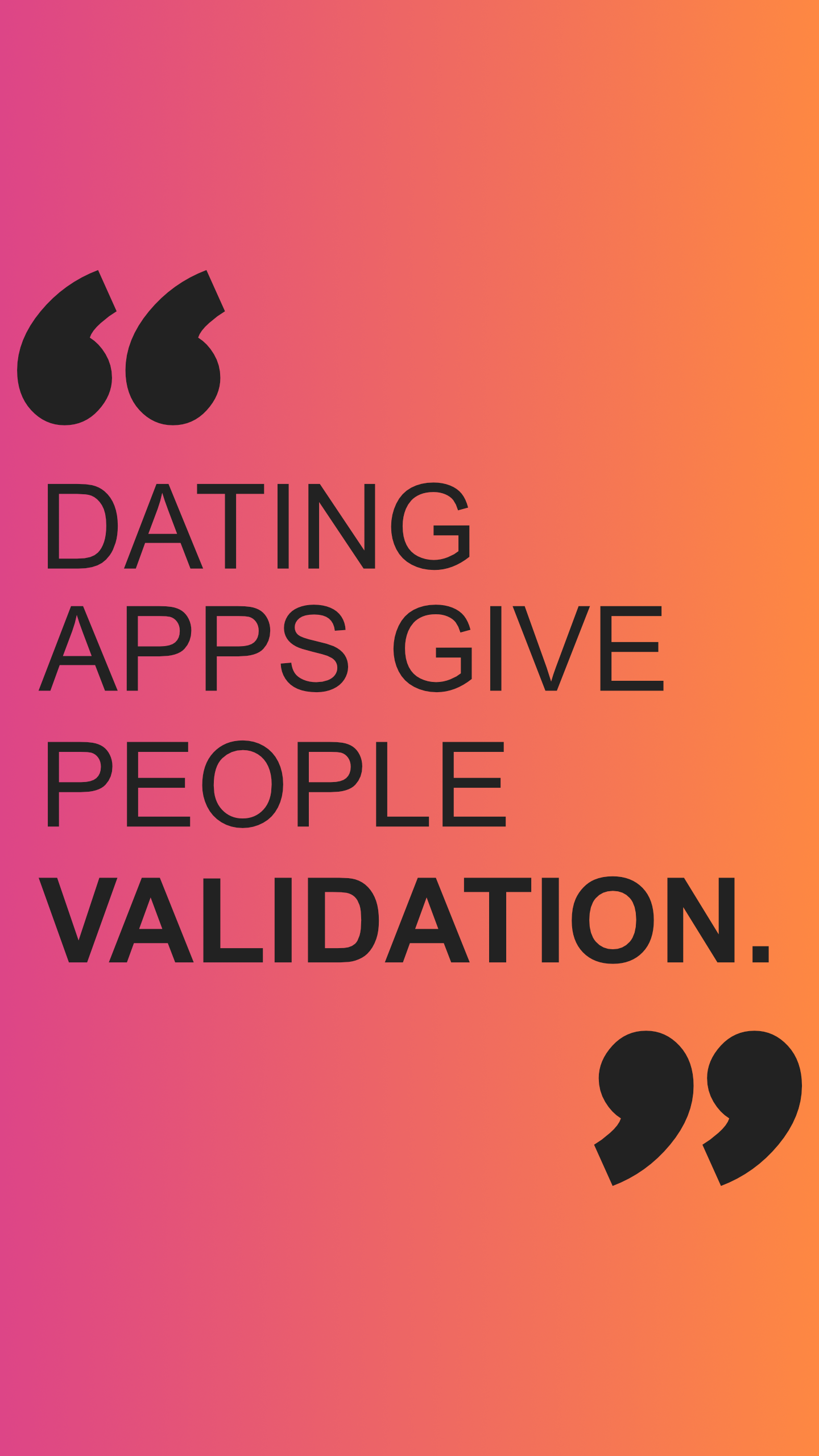
Final Thoughts
Having spent three months using Tinder on and off, I cannot help but take a step back and applaud how well-rounded their program is. Everything about its interface and user experience has been meticulously thought out, to the point where searching for a relationship, be it long-term or short-term, has become a part of people’s day-to-day lives.
Tinder’s addictive nature is very impressive, but that doesn’t distract me from the side effects the platforms causes.
Since its launch almost a decade ago, the dating scene has transformed into a strange cloud of potential, with the ability to tap a button on your phone and suddenly have your local city’s entire roster of single people available to potentially meet. Dating is no longer limited to going to bars and clubs, or meeting friends of friends; the door has been opened to connect people via the one thing that is in almost everybody’s pocket.
Tinder, on paper, is a fantastic concept - and in a perfect world, would help everyone meet the perfect partner. However, the bigger picture sees Tinder creating a wave of anxiety and low self-esteem, yet people continue to come back for more due to the addictive nature of the service.
It is safe to say that Tinder knows how our brains work better than we do.
Joe McCormick
